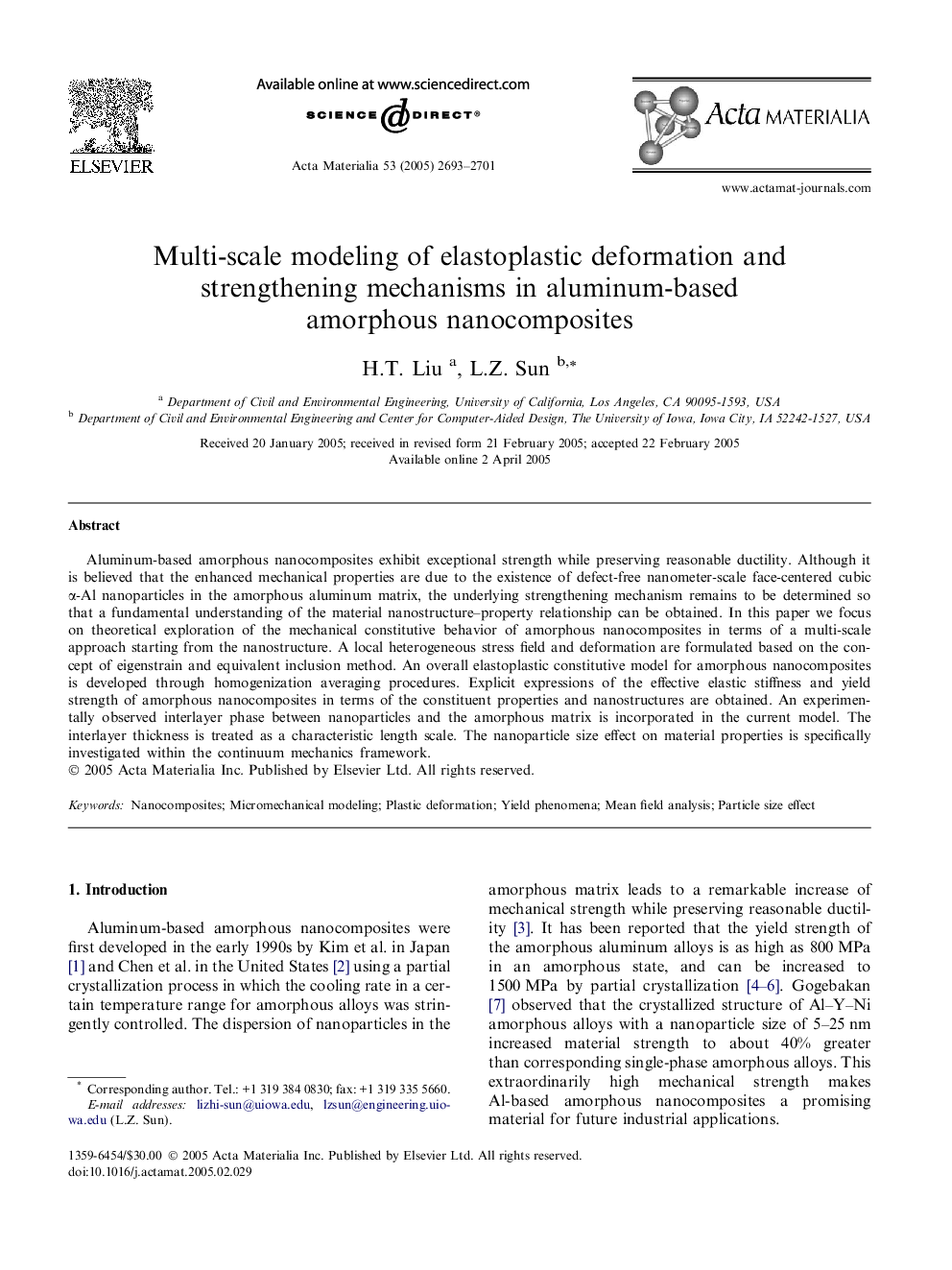| Article ID | Journal | Published Year | Pages | File Type |
|---|---|---|---|---|
| 1451365 | Acta Materialia | 2005 | 9 Pages |
Aluminum-based amorphous nanocomposites exhibit exceptional strength while preserving reasonable ductility. Although it is believed that the enhanced mechanical properties are due to the existence of defect-free nanometer-scale face-centered cubic α-Al nanoparticles in the amorphous aluminum matrix, the underlying strengthening mechanism remains to be determined so that a fundamental understanding of the material nanostructure–property relationship can be obtained. In this paper we focus on theoretical exploration of the mechanical constitutive behavior of amorphous nanocomposites in terms of a multi-scale approach starting from the nanostructure. A local heterogeneous stress field and deformation are formulated based on the concept of eigenstrain and equivalent inclusion method. An overall elastoplastic constitutive model for amorphous nanocomposites is developed through homogenization averaging procedures. Explicit expressions of the effective elastic stiffness and yield strength of amorphous nanocomposites in terms of the constituent properties and nanostructures are obtained. An experimentally observed interlayer phase between nanoparticles and the amorphous matrix is incorporated in the current model. The interlayer thickness is treated as a characteristic length scale. The nanoparticle size effect on material properties is specifically investigated within the continuum mechanics framework.
